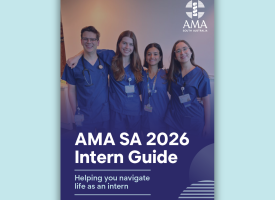Better approach needed to ensure patient access to medical services
The Australian Medical Association has written to Health Minister Mark Butler, saying an independent health workforce planning agency must be funded to provide robust advice on how many doctors Australia needs and the necessary reforms to support these doctors to work in the locations and specialties where they are most needed.

AMA President Professor Steve Robson said while the number of medical students had massively increased in Australia, Australia’s medical workforce was still unevenly distributed — with oversupply in some specialities and locations and undersupply in others.
“We need to see the recommendations of the National Medical Workforce Strategy implemented, and these include the creation of an independent health workforce planning and analysis agency.
“A new agency would fill the vacuum left by the abolition of Health Workforce Australia in 2014, which left a legacy of piecemeal workforce planning.
“It’s time for the government to act on the recommendations in the strategy, otherwise we will see more of the same issues in access to healthcare, particularly in rural and regional Australia.”
While medical schools continue to produce record numbers of medical graduates, we know that there are often insufficient training places in some specialty training programs while other programs like general practice are unable to fill all their available training places.
The AMA released its new position statement on Commonwealth Supported Places (CSPs) and Medical Workforce Supply and Distribution today, which also calls for taxpayer funded medical school CSPs to be allocated and distributed according to community and workforce need.
“The current focus on training more doctors and hoping they will end up where they are needed is not working,” Professor Robson said.
“Trickle down training just doesn’t deliver. Medical students do not receive sufficient exposure to undersubscribed specialties such as GP or psychiatry often meaning interest isn’t fostered or pursued in their vocational training. There are also limited opportunities to undertake non-GP specialist medical training as a doctor in training in rural and regional areas.
“The AMA is calling for accountability measures to be developed to ensure medical schools are delivering medical graduates that meet community and workforce needs.
“There has been an historic lack of long-term medical workforce planning to the point where we don’t even know how many doctors we need. More of the same isn’t the answer. Patient access to care will continue to deteriorate until investments in whole-of-medical training pipeline are made.”



